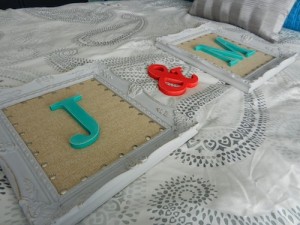In a society dominated by a desire for immediacy and a reliance on ready-made products, it is surprising that large groups of men and women are taking the time to adopt a resourceful and creative lifestyle through DIY, (“Do it yourself”), projects.

What was once considered by cool kids to be a thrifty, last-resort, or “poor” way of living has now resurfaced as an undeniable cache in the domains of fashion, art, and home decor.
Wikipedia defines DIY as “a method of building, modifying, or repairing something without the aid of experts or professionals,” the opposite of the “easy way out.” Successfully completing a project usually requires time and a well-stocked supply closet.
The term, put into common use in the 1950s, encompasses every possible medium: clothing, furniture, art, even cooking. For some modern DIYers, the passion transcended childhood, when machines like “The Bedazzler” made it easy to transform drab, run-of-the-mill department store clothing into unique, wearable pieces of art. Taking on these types of projects allows people to customize and personalize everyday items, and gives them the opportunity to add sentimental value to items that are worth nothing monetarily.
However, when most products are readily available in-store or online, the fundamental question is: why DIY? What is it about labour-intensive, old-timey arts and crafts projects that attract such a diverse crowd of people?
“It is the thrill of creating, experimenting and designing that I enjoy the most when I DIY,” said Mara Richardson, a specialty blogger at Wise Women Montreal and owner of Cherry on Top Designs, a company that makes custom decor items for children’s rooms.
“I think it is becoming so popular due to the fact a lot of people are on a budget,” explained Richardson. “So whether you find a treasure on the side of the road, recycle something you already own or buy something second-hand, you have the upper hand to creating something all your own.”

Creating DIY goods is a cost-effective way to decorate your home, a subtle way to reject consumerism and the mass consumption of everyday products. At any given time, there are items sitting in thrift shops, flea markets, or around the home that require a little TLC and will cost pennies to transform. It is a sustainable way of life, since items are essentially being recycled and repurposed instead of being thrown out.
Many DIYers appreciate the restorative and transformative value of their pieces. Aside from the strong sense of community and connection with other crafters, there is an undeniable allure in owning something that is unique. The positive mental effects of completing a project are what make it such a fulfilling hobby.It can allow any given person the opportunity to use both the hands and the brain, and deepens one’s appreciation for the things that we own, and the tools that allow us to transform them.
DIYers also adopt perhaps one of the most important qualities a person can have: the courage to screw up.
“It is both material and mental satisfaction owning something that you created from start to finish, a lot of times overcoming obstacles throughout that were unexpected, and surpassing them,” said Richardson.



